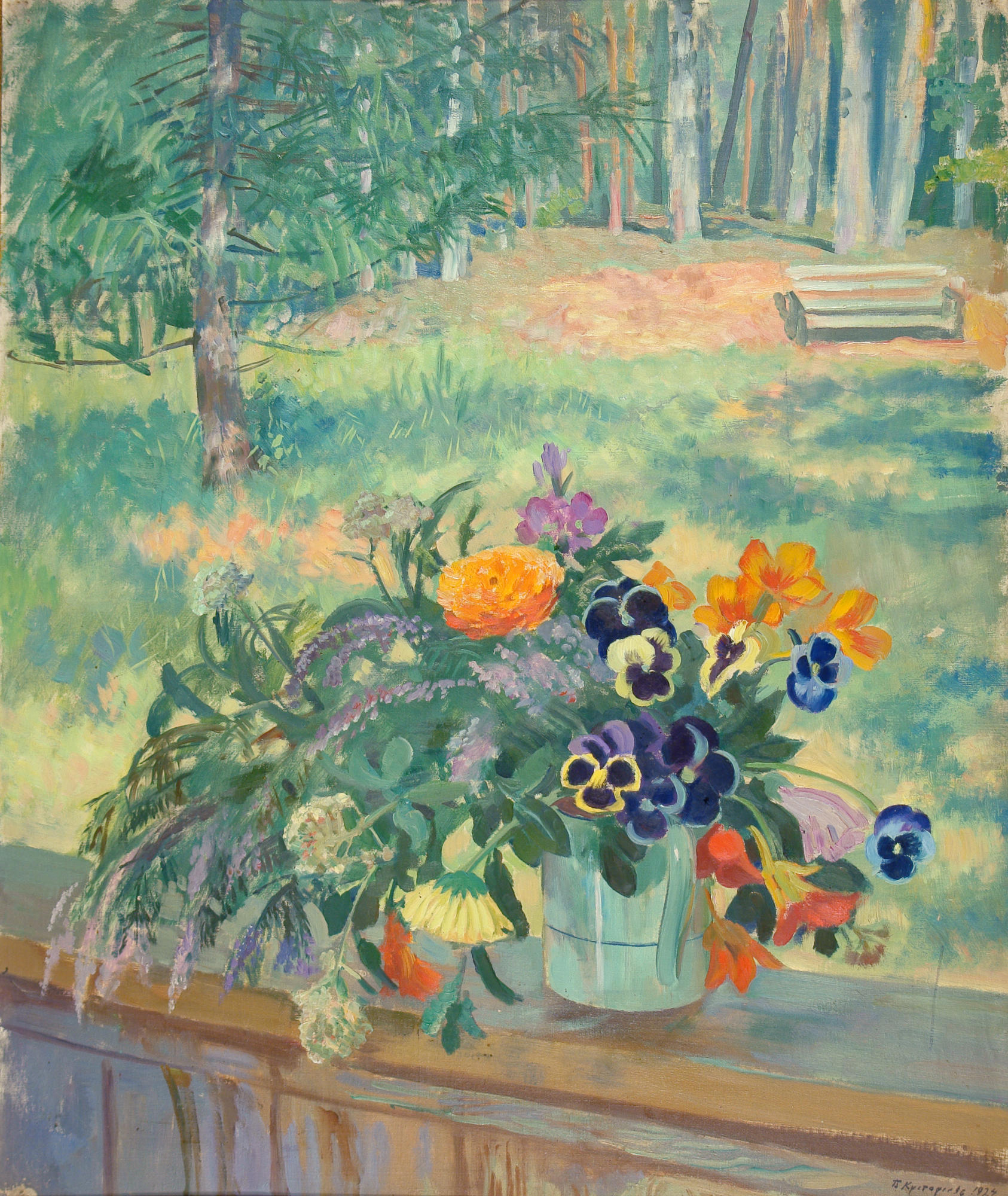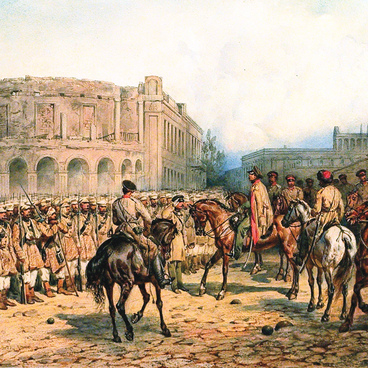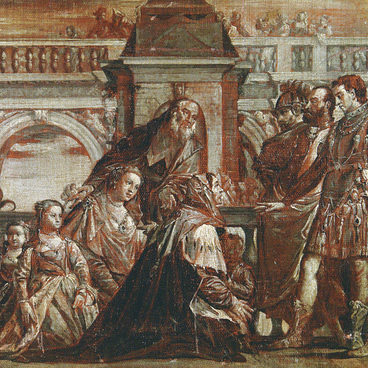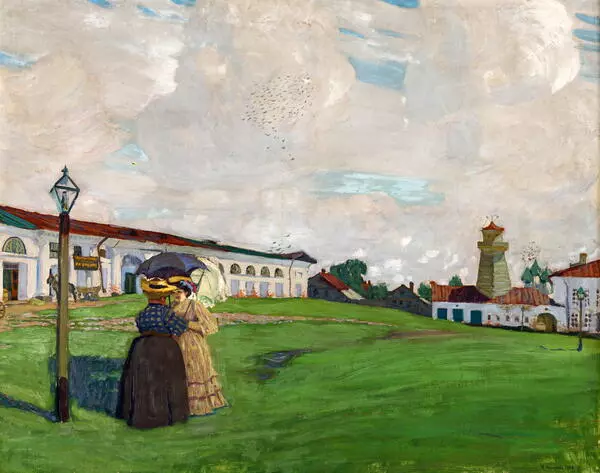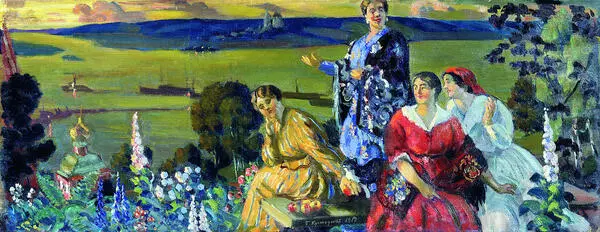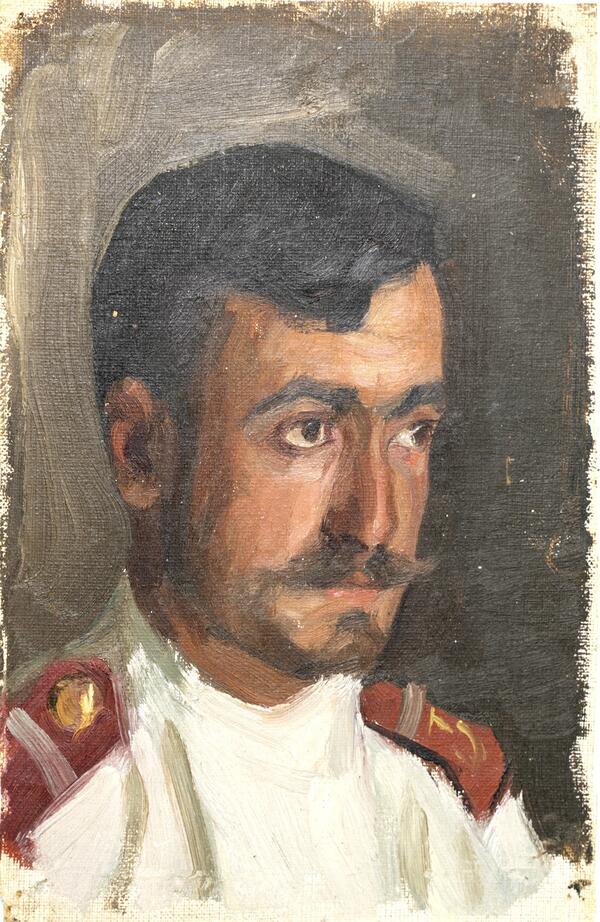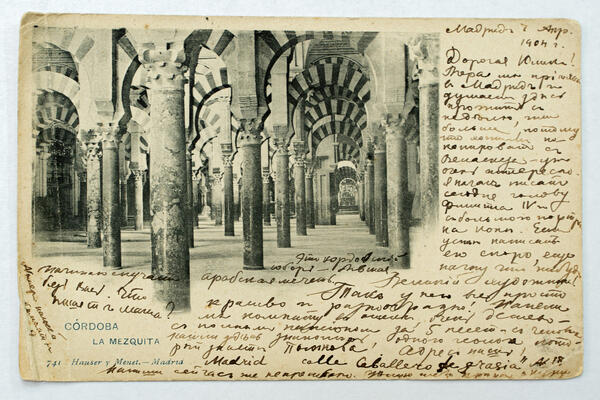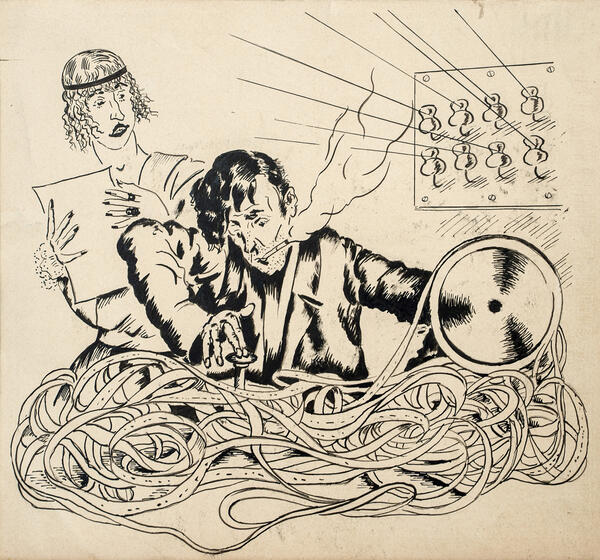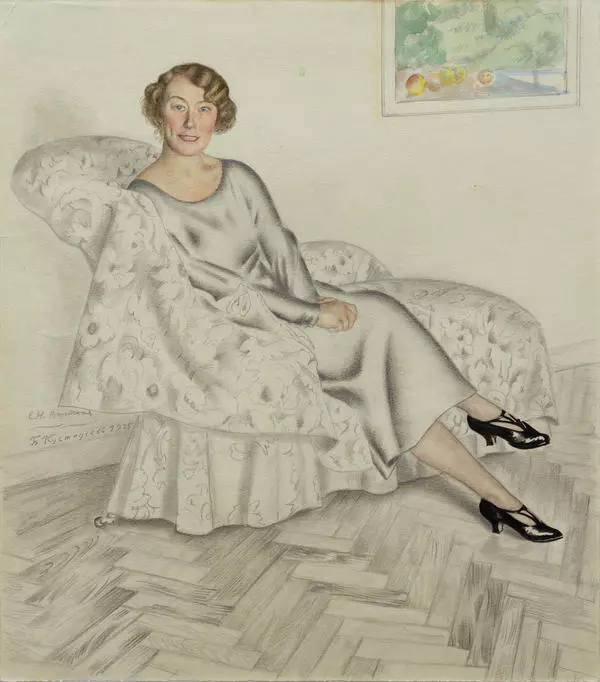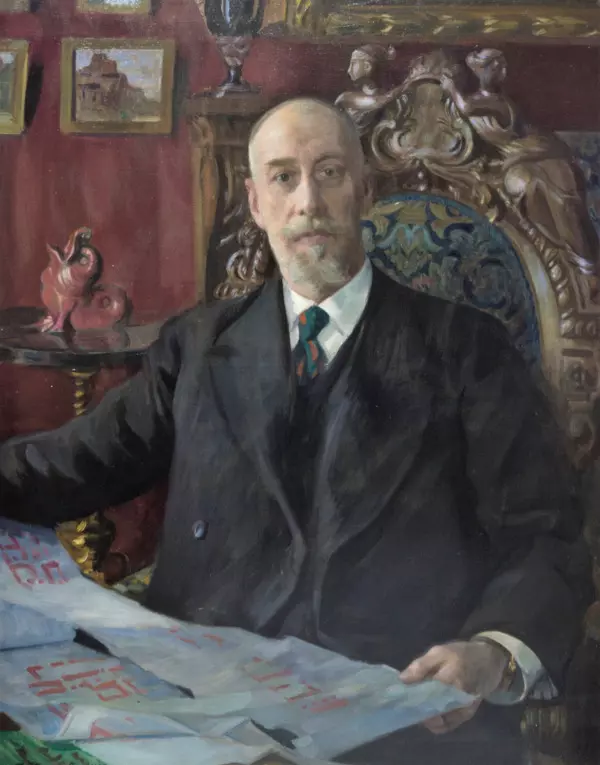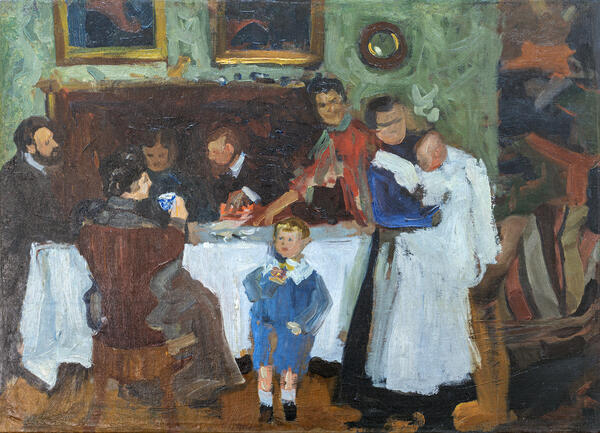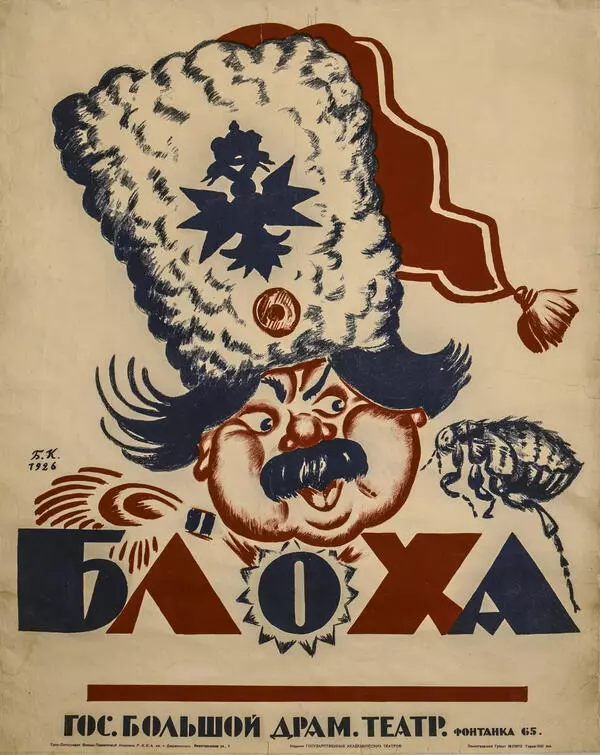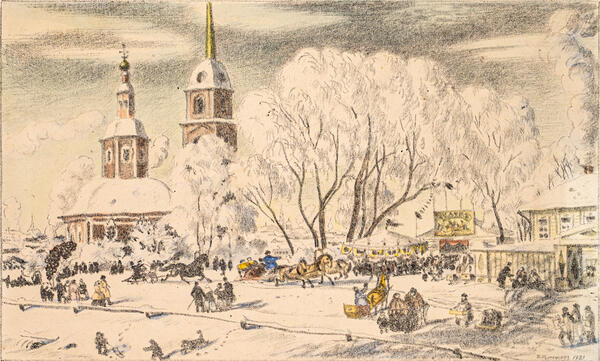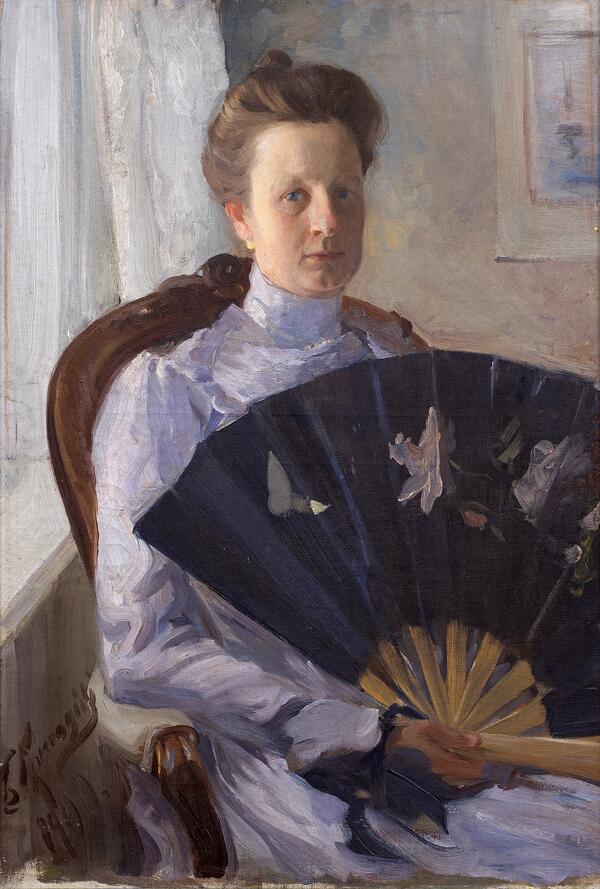Ilya Repin called Boris Kustodiyev ‘a hero of Russian painting’. A painter and a graphic artist, a sculptor and a theatrical artist, Kustodiyev entered the history of art as an ‘artist of festivity’, a master of scenes of folk feasts.
Boris Kustodiyev was born in 1878 in Astrakhan. From the age of fifteen he began to take drawing lessons from artist Pavel Vlasov. In 1896 Kustodiyev went to St. Petersburg and entered the Academy of Arts. He worked a lot, traveled, participated in Russian and foreign exhibitions. In 1906 the assembly of the Academy awarded Kustodiyev the title of academician of painting. At the same time the artist was offered to replace Valentin Serov on the position of a teacher of the portrait and genre class of the Moscow school of painting, sculpture and architecture. But Kustodiyev rejected the offer because he did not want to move to Moscow and spend extra time on teaching.
In 1909 Kustodiyev became seriously ill. Despite several surgeries, the artist had been confined to a wheelchair for the last 15 years of his life. Despite this, it was during that difficult period, when he created his brightest and most colorful works. The museum’s exhibition includes one of the still lifes belonging to the late period of the artist’s work. Kustodiyev spent July and August 1924, when the still life Flowers was written, at a dacha in Luga (Leningrad region, on the Leningrad-Pskov road).
The painting was received in 1945 from the procurement fund for the Arts of the Council of People’s Commissars of the RSFSR.
Boris Kustodiyev was born in 1878 in Astrakhan. From the age of fifteen he began to take drawing lessons from artist Pavel Vlasov. In 1896 Kustodiyev went to St. Petersburg and entered the Academy of Arts. He worked a lot, traveled, participated in Russian and foreign exhibitions. In 1906 the assembly of the Academy awarded Kustodiyev the title of academician of painting. At the same time the artist was offered to replace Valentin Serov on the position of a teacher of the portrait and genre class of the Moscow school of painting, sculpture and architecture. But Kustodiyev rejected the offer because he did not want to move to Moscow and spend extra time on teaching.
In 1909 Kustodiyev became seriously ill. Despite several surgeries, the artist had been confined to a wheelchair for the last 15 years of his life. Despite this, it was during that difficult period, when he created his brightest and most colorful works. The museum’s exhibition includes one of the still lifes belonging to the late period of the artist’s work. Kustodiyev spent July and August 1924, when the still life Flowers was written, at a dacha in Luga (Leningrad region, on the Leningrad-Pskov road).
In the diary of artist Vsevolod Voinov one can find the following record: ‘B.M. had made one still life with oil (flowers on the balcony) for the entire summer.’ Turning to Kustodiyev’s personal correspondence, one can find a letter to his son dated June 29, from which it is known about the circumstances that prompted the creation of this work: “June 29, 1924, Luga. Dear Kira, I have received your letter, where you are writing about the still life, which must be painted on the assignment - “painted objects in the air.”
Of course, it would be best to do it here by putting something on the balcony or on the window in the room right against the background of the pines that grow in these parts; it could be done beautifully. It could be done during one of your visits up here. You’d bring all the materials (plywood, paint, folding easel) and paint it all. If it’s going to be difficult and you cannot stay here for sufficiently long to complete the painting, then put the items in my bedroom on the window, it’s the most convenient. The window can be opened, because there is quite an entertaining view of the garden and the houses…. Or one can do like this: put a hat, my gray one (or a ladies' colored hat), a color book (‘History’ by Benoit or ‘Apollo’), a jug, colored or white, place a branch of greenery in it, for example maple (it will stand for a long time) - a simple subject is ready, and if painted in the background of the view from the window, it would be quite a picture. That’s what I think. Don’t start anything substantial. Kiss you, say hello to the comrades. Your dad.’
The painting was received in 1945 from the procurement fund for the Arts of the Council of People’s Commissars of the RSFSR.
